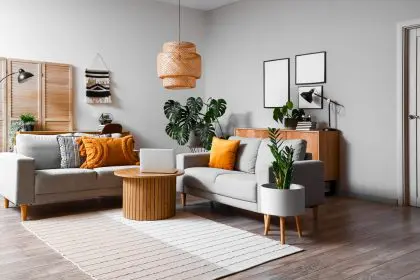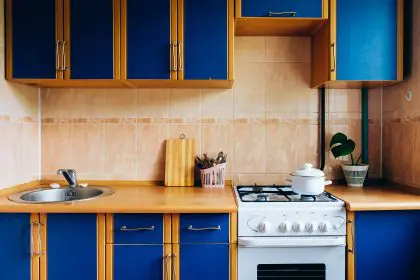The concept of dedicated adult spaces within homes has evolved significantly in recent years, moving beyond the traditional basement rec room or formal living area rarely used outside of holiday gatherings. Today’s homeowners increasingly prioritize creating sophisticated yet comfortable zones specifically designed for adult relaxation, entertainment, and connection.
Interior designers note that well-conceived adult hangout spaces serve multiple purposes: they provide a retreat from work and family responsibilities, create environments conducive to meaningful social interaction, and express personal style unfettered by the practical demands that dictate design in other areas of the home.
Identifying the ideal location and layout
The first step in creating an effective adult hangout space involves thoughtful consideration of location and spatial configuration. The most successful spaces balance accessibility with appropriate separation from household thoroughfares.
Underutilized formal dining rooms present perfect conversion opportunities in many homes. These spaces typically offer proximity to kitchens for convenient refreshment access while maintaining separation from primary living areas. Their inherent formality can be maintained or subverted depending on the desired atmosphere.
Finished basements and attics provide excellent options for those seeking more substantial separation. The physical distance from main living areas creates psychological distance from daily responsibilities, enhancing the retreat-like quality. However, these locations require careful attention to accessibility concerns, difficult stairs or remote locations may limit spontaneous use.
For homes with limited square footage, flexible zoning presents a viable alternative. Techniques like strategic furniture arrangement, distinctive lighting schemes, and acoustic considerations can effectively create the sense of a separate adult space within an open floor plan. The key lies in establishing clear visual and experiential boundaries without requiring permanent structural changes.
Seating configurations that promote connection
The heart of any successful adult hangout space lies in thoughtful seating arrangements that facilitate conversation while providing comfort for extended gatherings. Design professionals recommend prioritizing flexibility to accommodate different group sizes and interaction styles.
Conversation pit arrangements have experienced a sophisticated revival, with modular seating creating partial or complete circles that naturally encourage face-to-face interaction. Updated versions incorporate varied seating heights and comfort levels, accommodating different physical preferences while maintaining visual cohesion.
The 90-degree rule proves particularly effective in rectangular spaces. This approach positions primary seating at right angles rather than directly opposite, creating a more natural conversational flow while maintaining sight lines to shared focal points like fireplaces or media screens.
Supplementary seating deserves particular attention in spaces designed for fluid socializing. Lightweight ottomans, upholstered cubes, and slim side chairs that can be easily repositioned allow for organic reconfiguration as gatherings evolve throughout an evening. The most successful spaces include seating options at different heights, accommodating preferences for perching, lounging, and standard seating positions.
Incorporating entertainment elements thoughtfully
Adult-oriented spaces typically incorporate entertainment features, but their integration demands subtlety to maintain sophisticated ambiance. The goal involves providing engagement options without allowing any single element to dominate the space visually or functionally.
Media solutions require particular finesse. Designers increasingly recommend alternatives to traditional large television installations, such as projector systems that disappear when not in use, frame televisions that display artwork in standby mode, or strategically placed screens that don’t serve as the room’s primary focal point.
Analog entertainment options have experienced significant resurgence, with board game tables, vinyl listening stations, and card areas providing interactive alternatives that foster direct social engagement. These elements often feature prominently in space planning, with custom storage solutions highlighting curated collections as design elements rather than tucking them away.
Beverage stations have evolved beyond traditional bar carts to become integrated features in many adult spaces. Wine refrigerators, specialized glassware storage, and coffee/tea service areas create designated zones for refreshment preparation that complement the overall design aesthetic while providing natural gathering points during social events.
Ambient elements that shape experience
Beyond functional components, sophisticated adult spaces incorporate carefully considered ambient elements that dramatically impact how the space feels without necessarily drawing conscious attention.
Lighting design plays a pivotal role in establishing atmosphere, with most successful spaces featuring multi-layered systems. Combining ambient illumination, task lighting, and accent elements creates flexibility for different activities and times of day. Smart lighting systems that allow preset scenes have become increasingly accessible, enabling instant transitions between energetic gathering modes and more intimate conversation settings.
Acoustic considerations significantly impact comfort during extended gatherings. Strategic incorporation of soft surfaces, plush area rugs, upholstered furniture, acoustic panels disguised as artwork, helps absorb sound and prevent the echo effects that can make conversation difficult. For spaces designed for music appreciation, targeted acoustic treatments can enhance listening experiences without creating clinical environments.
Scent often goes unconsidered in space planning yet substantially influences experience. Dedicated adult spaces present opportunities for more sophisticated aromatherapy approaches than might be practical in family-oriented areas. Integrated systems that subtly disperse complex scent profiles represent a growing trend, moving beyond simple candles or diffusers toward more comprehensive sensory design.
Personal expression through thoughtful design choices
While functionality forms the foundation of effective adult spaces, these areas also offer unique opportunities for personal expression through design choices that might be impractical in heavily trafficked or multi-purpose areas of the home.
Material selections often skew toward sophisticated options requiring more maintenance than would be feasible in family-oriented spaces. Higher maintenance textiles like velvet, cashmere throws, and fine wool rugs create tactile luxury that significantly enhances the experiential quality of adult retreats.
Color strategy frequently diverges from approaches used elsewhere in the home. While residential color schemes typically prioritize versatility and broad appeal, adult-specific spaces allow for more expressive palettes. Current trends favor richly saturated jewel tones, dramatic dark walls paired with metallic accents, and complex neutral schemes that create sophisticated backdrops for art and conversation.
Art and collections display represents perhaps the most personal aspect of adult space design. These areas offer ideal settings for showcasing pieces that hold special meaning or require mature appreciation. Designers note a trend toward creating rotation systems for displaying curated collections, allowing spaces to evolve visually over time while protecting valuable pieces from extended light exposure.
Practical considerations for long-term enjoyment
Beyond aesthetic and experiential elements, successful adult hangout spaces incorporate practical considerations that ensure ongoing functionality and satisfaction.
Durability requirements remain important despite the adult-oriented nature of these spaces. Materials must withstand the specific challenges of social gatherings, spilled wine, extended sitting periods, and increased wear patterns around entertainment features. Performance fabrics developed for commercial environments now come in sophisticated options appropriate for residential applications.
Storage integration directly impacts how well spaces function during actual use. The most successful designs incorporate discrete storage for items needed during gatherings, extra glassware, charging cables, throw blankets, game components, in locations that allow access without disrupting social flow. This thoughtful organization helps maintain the curated aesthetic that distinguishes these spaces.
Technology integration has evolved significantly, with successful approaches focusing on enabling experiences rather than showcasing equipment. Hidden charging stations, wireless audio systems, and ambient technology controlled through unobtrusive interfaces ensure convenience without creating visual distraction or dated aesthetics as equipment evolves.
Creating effective adult hangout spaces involves balancing numerous considerations, from practical layout planning to nuanced atmospheric elements. When thoughtfully executed, these areas provide valuable retreats from daily responsibilities while fostering the meaningful connections and personal enjoyment that busy adults increasingly prioritize in their home environments.
Whether converting an existing room, carving out a zone within an open plan, or designing a purpose-built addition, the investment in a well-conceived adult space typically delivers returns extending far beyond the financial, creating environments where authentic connection, personal rejuvenation, and sophisticated enjoyment become natural parts of everyday life.














